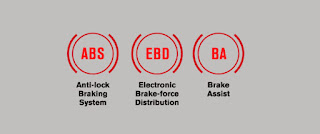Driving through Ghats – Hill Driving in India
 |
| Our 2nd Car - Audi A4 35 TFSI |
| My 1st Car - Ford Fiesta 1.4 EXI |
I don’t consider myself to be an expert in driving, even after thousands of kilometeres I still feel I have a lot to learn. However, during these thousands of kilometers I have driven in many different situations including several different terrains. Undoubtedly driving through the Ghats section of India, is definitely a challenging task. Be it driving through the Western Ghats or driving through the hills of Kumaon, each has its own set of challenges and excitement. I will list down my experiences, learning and some driving tips that might help other enthusiastic drivers.
I will try to list down my instances of hill driving in India here below,
- Driving through ghats of Ooty and Conoor
- Driving through ghats and forest area of Munnar
- Driving through ghats and forest area of Hazaribagh
- Driving through the ghats of Mahabaleshwar
- Driving through the ghats of Khandala and Lonavala
- Driving through the ghats of Araku and Ananthagiri
- Driving through the ghats of Kumaon – Nainital, Kausani
- Drive unhurried – it’s the first lesson to be learned. Any haste, rash or fast driving in the ghats section should be completely avoided.
- Always stick to the left side of the road – Even if you find the roads completely traffic free, still maintain the discipline of holding the left side. This will avoid all possible accident causes that happen on the blind turns.
- The right to move on the hills always goes to the upcoming vehicle – if you are driving downhill always allow the upcoming vehicle to pass, even if that requires you to stop.
- Honking in that serene environment is not always acceptable, unless it is a completely blind turn and you don’t see anything on the other side. In some turns it is mandatory to honk, they even have placed symbols to honk there, but people carry this habit in the entire ghats section and try to honk in every turn. Somehow that is not required and is very irritating as well.
- During the night however honking is never needed since headlamps give clear indication regarding vehicle approaching each other.
- It is not advisable to use high beam on the hills as the glare and blinding effect can be very dangerous for the oncoming vehicles, always maintain dipper.
- Always drive at the maximum possible gear, only when the car isn’t able to hold then downshift – this will give you enough power when required on some steep climbs and will significantly improve your fuel economy.
- If the roads are too narrow for two vehicles to pass simultaneously, the same rule applies as to who goes first – it’s always the upcoming vehicle that gets the preference.
- For people or co-passengers who have motion sickness – it’s advisable for them to sit in the front seat and watch the road ahead. Sitting at the back seat and looking out of the window gives the impression to your mind that you are still however your body is actually moving. However sitting in the front seat and watching the road ahead will keep your mind occupied in thinking that everything is in motion, hence there won’t be any conflict. (Have you ever noticed that drivers in the ghats section never suffer from motion sickness – the reason is very simple – there’s no conflict between their mind and body) So sit in the front seat, watch the road ahead and you will be surprised to see that you wont suffer any motion sickness
- Always carry Ginger Ale drink with you – it’s a remedy of motion sickness during the hilly terrain
- If you have to stop and park your vehicle in the hills on the roadside, ensure you don’t do that immediately before or after a turn. Always try to park outside the road and so that your car is visible from a long distance from both ends of the road.
- When going downhill, never ever switch off your ignition thinking that your car will be able to roll downhill without any effort. Most modern cars have their electronics linked to the ignition, once the ignition is turned off all these gizmos turn off as well. For instance, without ignition the power steering won’t work and the steering wheel will get locked in certain cars. In some cars even the brakes stop functioning properly when the ignition is off. So to avoid all possible accidents, never switch off your engine when rolling downhill.
- It’s okay to let your car roll downhill in neutral gear. Just ensure the engine is on. This will ensure all electrical systems are running and since the engine will be at its lowest RPM, so the fuel consumption will also be minimal.
- Always anticipate the turns and keep a watch on the signboards along the road
- If you are driving with windows open, then be cautious in foggy conditions. As the fog may mist your windscreen resulting in hazardous situation. It is advisable to roll up windows in the hilly terrain and keep the AC on.

